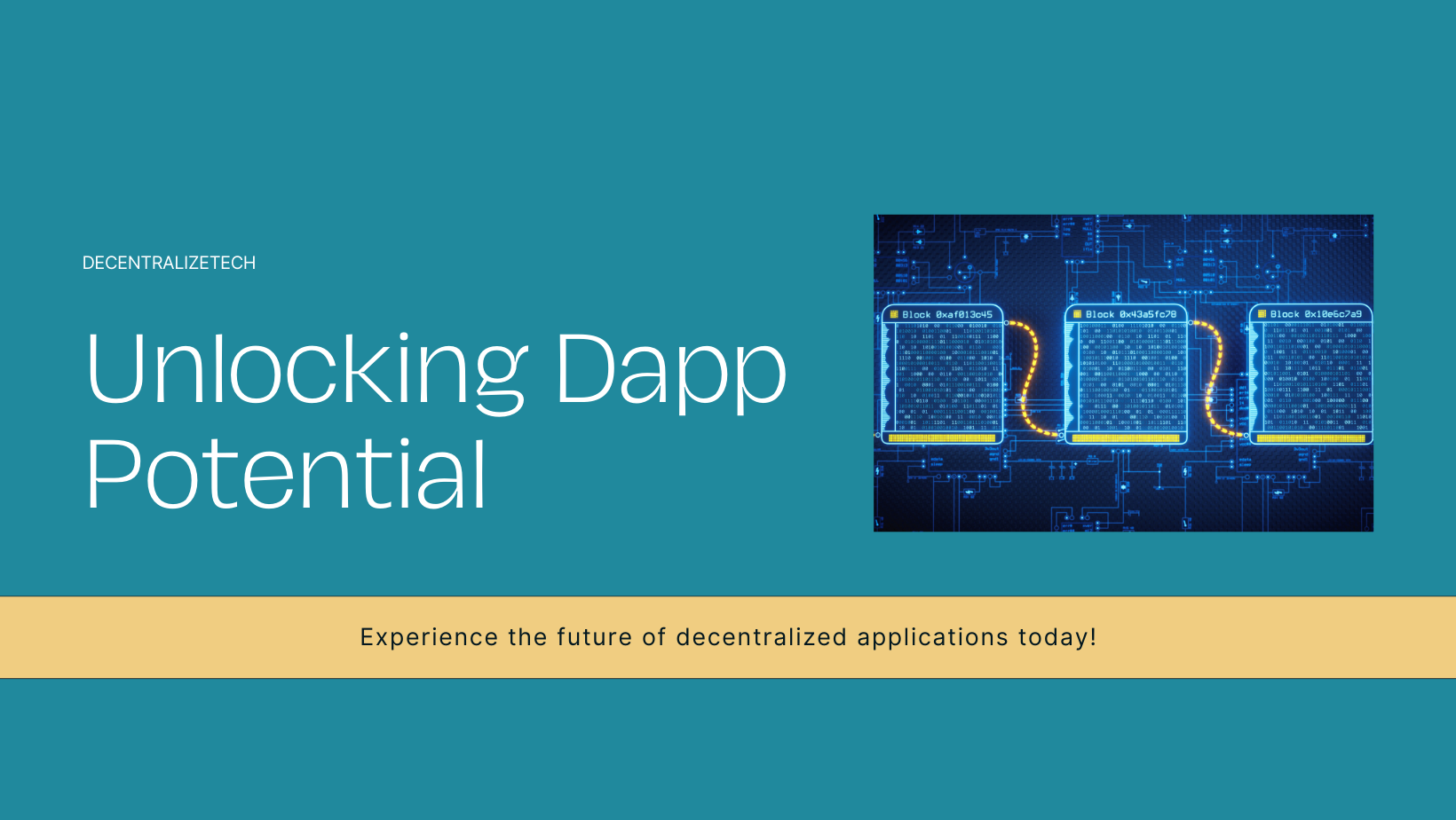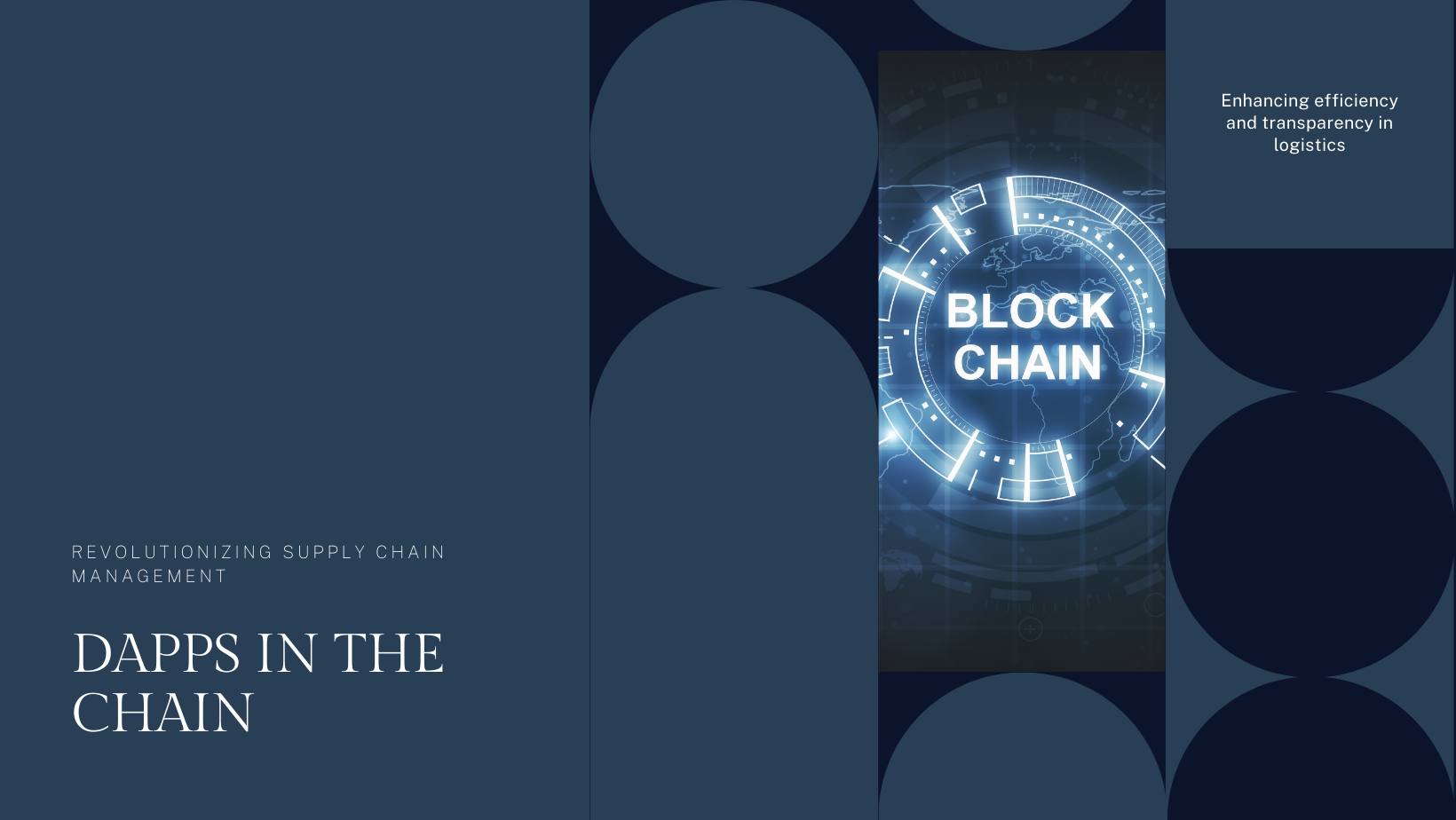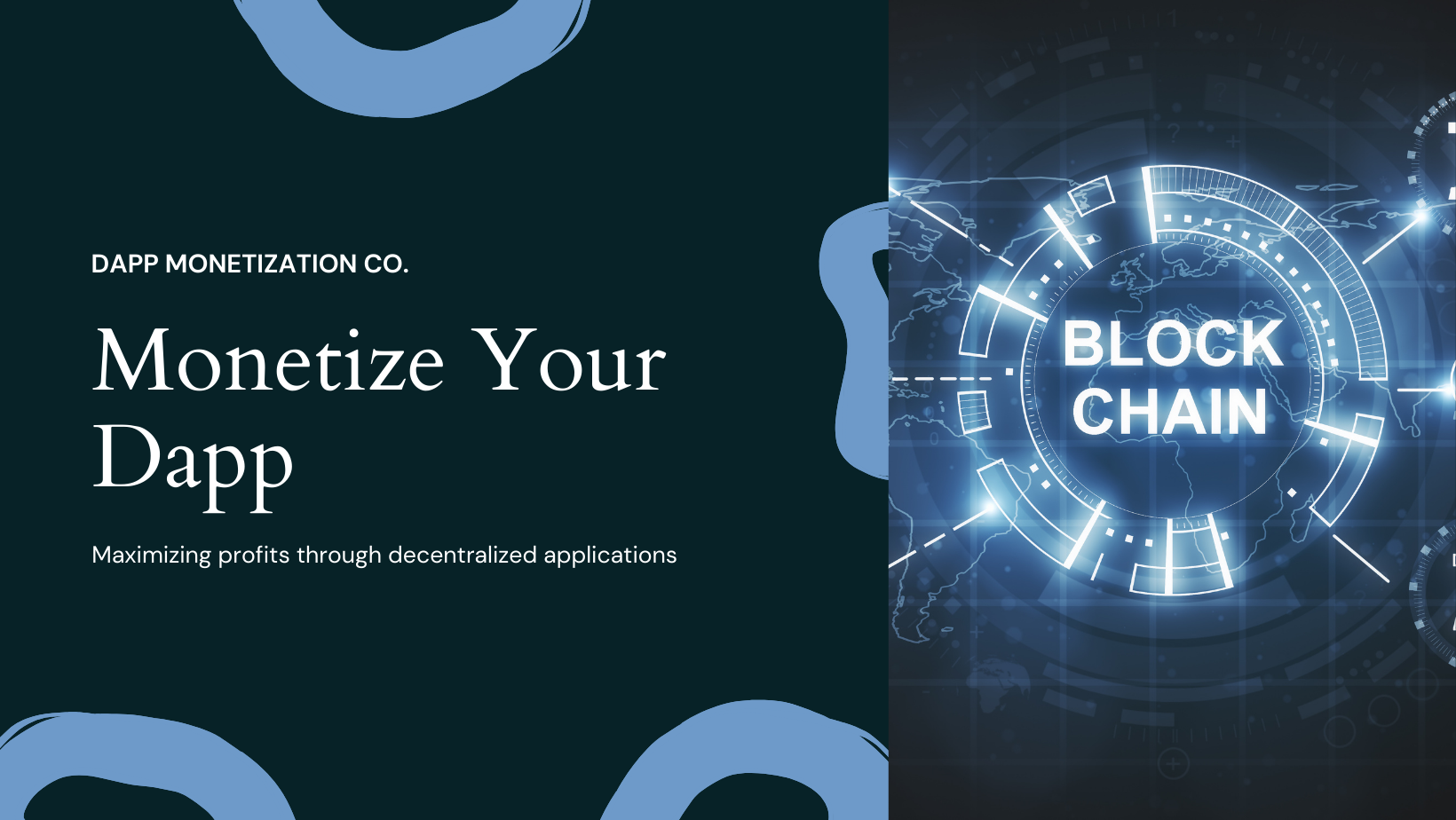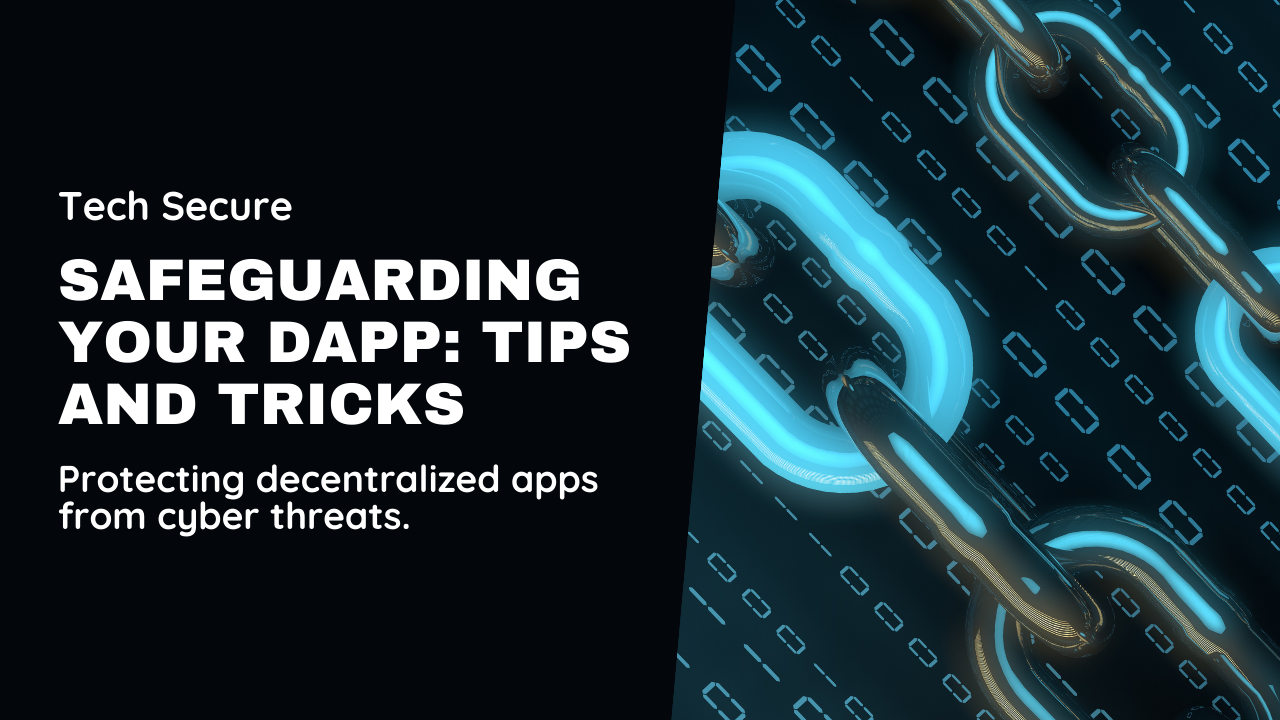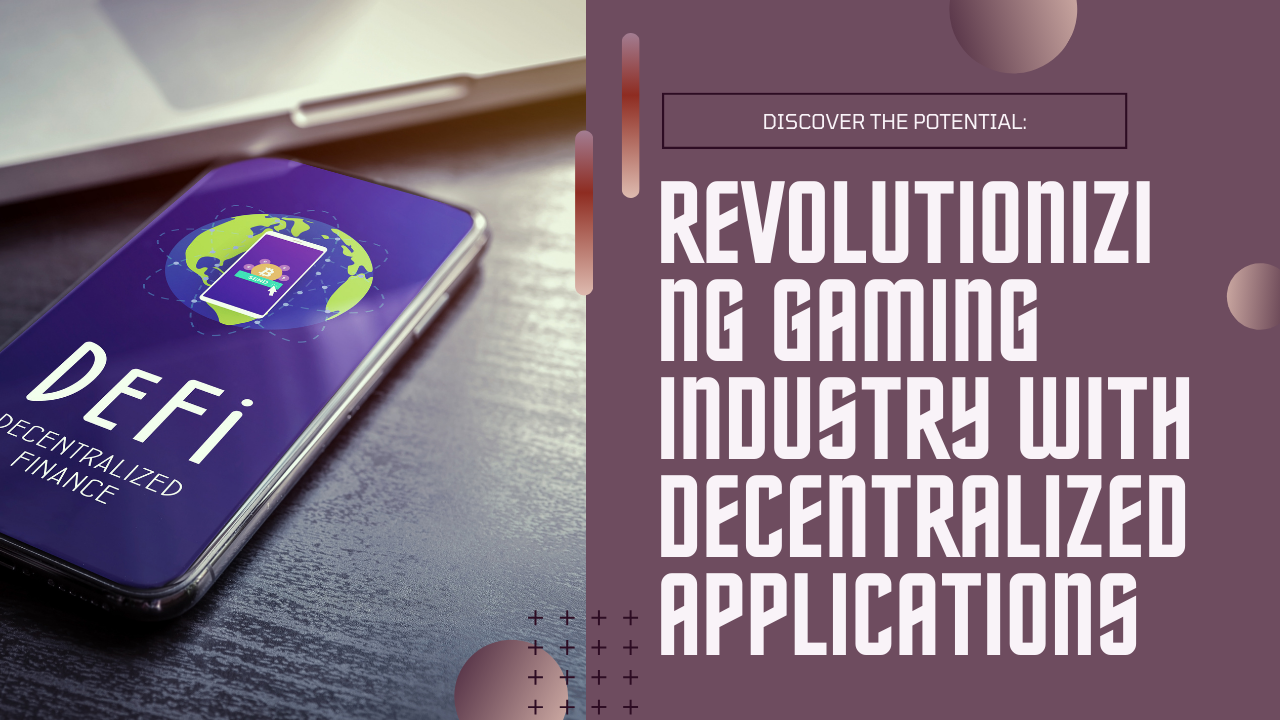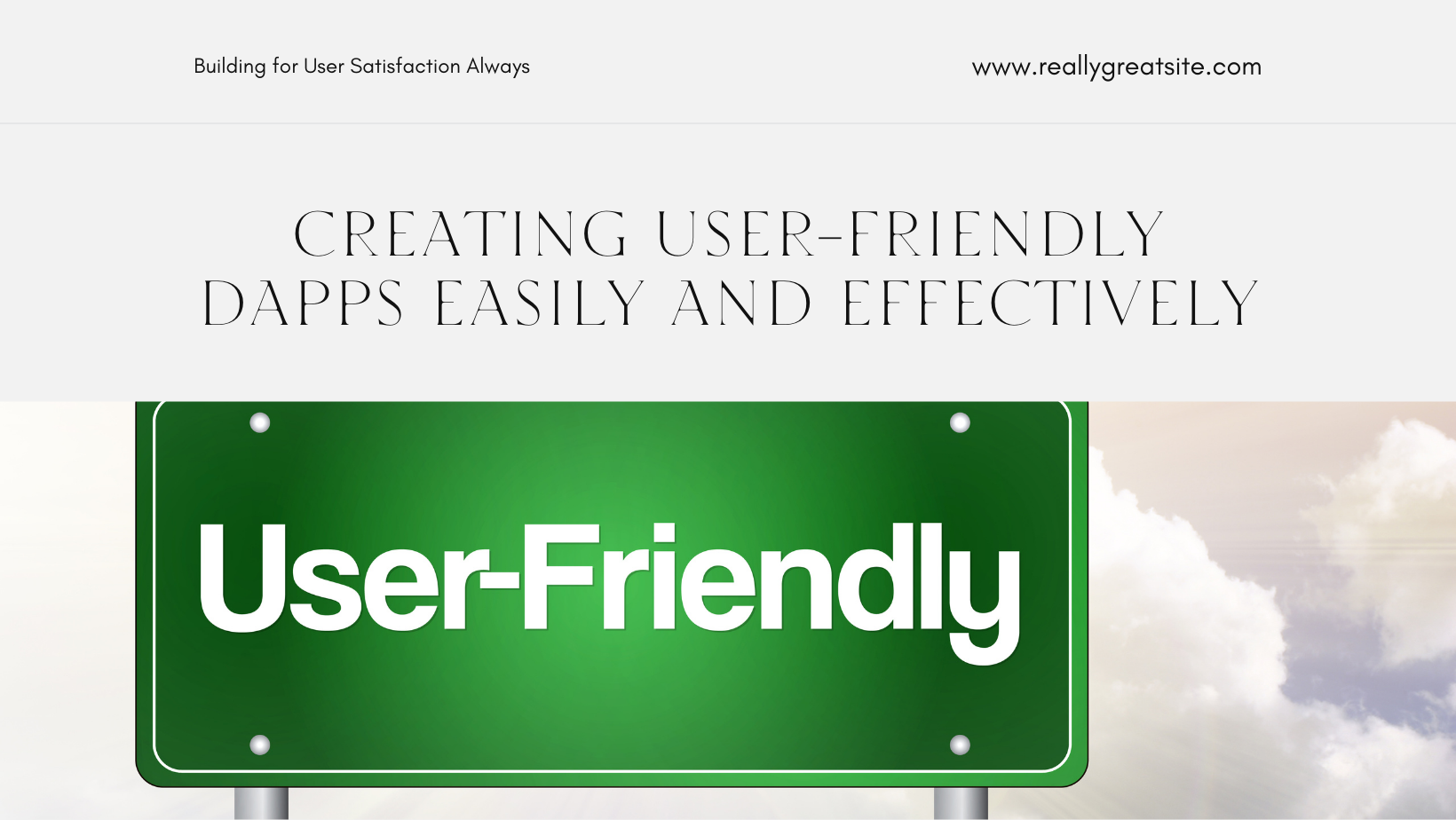In the rapidly evolving digital landscape, decentralized applications (Dapps) are gaining significant traction. These applications, powered by blockchain technology, offer a new paradigm in software development, shifting control from centralized entities to decentralized networks. This blog aims to provide a comprehensive understanding of Dapps, their underlying technology, benefits, challenges, and potential future.
What Are Decentralized Applications (Dapps)?
Decentralized applications, or Dapps, are digital applications or programs that operate on a blockchain or peer-to-peer (P2P) network of computers instead of a single central server. This decentralized nature ensures that no single entity has control over the entire network, promoting transparency, security, and autonomy.
Key Characteristics of Dapps
- Decentralization: Dapps run on decentralized networks, typically a blockchain, which means they are not controlled by a single central authority. This decentralization is crucial for ensuring transparency and security.
- Open Source: Most Dapps are open source, allowing anyone to view and audit the code. This openness fosters trust and collaboration among developers.
- Incentives: Dapps typically offer tokens or cryptocurrencies as incentives to users who participate in the network. These tokens can have value and be traded on various platforms.
- Consensus Mechanisms: Dapps use consensus algorithms (like Proof of Work, Proof of Stake, etc.) to validate transactions and maintain the network’s integrity.
How Dapps Work
Dapps leverage smart contracts, which are self-executing contracts with the terms of the agreement directly written into code. These smart contracts run on blockchain platforms like Ethereum, enabling decentralized and automated operations.
- Smart Contracts: These are the backbone of Dapps. Smart contracts are deployed on a blockchain and execute automatically when predefined conditions are met.
- Blockchain: This is the underlying technology that ensures data integrity, security, and immutability. Each transaction is recorded on a block, which is then added to the chain of previous blocks.
- Decentralized Network: Instead of relying on a single server, Dapps use a network of nodes (computers) to process and validate transactions. This network ensures that the application remains operational even if some nodes fail.
Benefits of Dapps
- Security: Since Dapps run on blockchain technology, they benefit from its robust security features. Data is encrypted and distributed across the network, making it difficult for hackers to alter information.
- Transparency: All transactions on a blockchain are publicly recorded and verifiable, promoting transparency and trust among users.
- Autonomy: Dapps operate independently of centralized authorities. This autonomy ensures that no single entity can manipulate or control the application.
- Censorship Resistance: Due to their decentralized nature, Dapps are resistant to censorship. No central authority can shut down or restrict access to the application.
- User Control: Users have greater control over their data and assets. They can interact with the Dapp directly without intermediaries.
Challenges of Dapps
- Scalability: One of the significant challenges facing Dapps is scalability. Blockchain networks can become congested, leading to slower transaction times and higher fees.
- User Experience: Dapps often have a steeper learning curve compared to traditional applications. Users need to understand concepts like wallets, private keys, and gas fees.
- Regulatory Uncertainty: The regulatory environment for Dapps and cryptocurrencies is still evolving. This uncertainty can pose risks for developers and users.
- Interoperability: Ensuring that different Dapps and blockchain networks can communicate and work together seamlessly remains a challenge.
- Development Complexity: Building Dapps requires specialized knowledge of blockchain technology and smart contract programming, which can be a barrier for many developers.
Popular Dapp Platforms
- Ethereum: Ethereum is the most popular platform for Dapp development. It provides a robust environment for deploying smart contracts and has a large developer community.
- EOS: EOS aims to provide a more scalable and user-friendly platform for Dapps. It uses a different consensus mechanism (Delegated Proof of Stake) to achieve faster transaction speeds.
- Tron: Tron focuses on content sharing and entertainment. It aims to decentralize the web by allowing users to create and share content without intermediaries.
- Cardano: Cardano is known for its focus on security and sustainability. It uses a proof-of-stake consensus mechanism and aims to provide a balanced and sustainable ecosystem for Dapps.
- Polkadot: Polkadot enables interoperability between different blockchains, allowing Dapps to operate across multiple networks seamlessly.
Use Cases of Dapps
- Finance (DeFi): Decentralized Finance (DeFi) is one of the most significant use cases of Dapps. DeFi platforms enable users to lend, borrow, trade, and earn interest on their assets without intermediaries.
- Examples: Uniswap, Aave, Compound.
- Gaming: Dapps are revolutionizing the gaming industry by enabling play-to-earn models and true ownership of in-game assets through NFTs.
- Examples: Axie Infinity, Decentraland, Cryptokitties.
- Supply Chain: Dapps can enhance transparency and traceability in supply chains by recording every transaction on the blockchain.
- Examples: VeChain, Provenance.
- Social Media: Decentralized social media platforms give users control over their data and content, preventing censorship and data exploitation.
- Examples: Steemit, Minds.
- Healthcare: Dapps can improve healthcare by ensuring secure sharing of patient data, enhancing data integrity, and reducing fraud.
- Examples: MedRec, Patientory.
Developing Dapps
- Choosing a Platform: Select a blockchain platform that aligns with your project’s goals. Ethereum is the most popular choice, but other platforms like EOS, Tron, and Polkadot offer unique advantages.
- Smart Contract Development: Write and deploy smart contracts using programming languages like Solidity (for Ethereum) or Vyper. Smart contracts define the logic and rules of your Dapp.
- Frontend Development: Develop the user interface using traditional web development technologies (HTML, CSS, JavaScript). Integrate the frontend with the blockchain using libraries like Web3.js or Ethers.js.
- Testing: Thoroughly test your Dapp to ensure it functions as intended. Use testnets (like Ropsten or Rinkeby for Ethereum) to test without spending real cryptocurrency.
- Deployment: Deploy your smart contracts to the mainnet and launch your Dapp. Ensure you have sufficient funds for gas fees and initial operations.
- Maintenance and Updates: Continuously monitor and update your Dapp to address bugs, add new features, and improve performance. Engage with your user community for feedback and support.
The Future of Dapps
The future of Dapps looks promising, with several trends and developments poised to shape the landscape:
- Scalability Solutions: Layer 2 solutions (like Optimistic Rollups and zk-Rollups) and advancements in blockchain technology aim to address scalability issues, enabling faster and cheaper transactions.
- Interoperability: Projects like Polkadot and Cosmos are working towards seamless interoperability between different blockchains, allowing Dapps to leverage the strengths of multiple networks.
- User Experience: Improving the user experience is critical for mass adoption. Simplified interfaces, better wallet integrations, and educational resources will make Dapps more accessible to the average user.
- Regulation: As governments and regulatory bodies become more familiar with blockchain technology, clearer regulations will emerge. This regulatory clarity will provide a more stable environment for Dapp development and usage.
- Integration with Traditional Systems: Dapps will increasingly integrate with traditional financial systems, businesses, and industries, bridging the gap between decentralized and centralized systems.
Conclusion
Decentralized applications (Dapps) represent a transformative shift in how we think about software, ownership, and trust. By leveraging blockchain technology, Dapps offer unprecedented levels of security, transparency, and autonomy. While challenges remain, the continued development of scalable solutions, improved user experiences, and regulatory clarity will pave the way for a new era of decentralized innovation. As we move forward, understanding and embracing Dapps will be crucial for anyone looking to stay at the forefront of the digital revolution.
